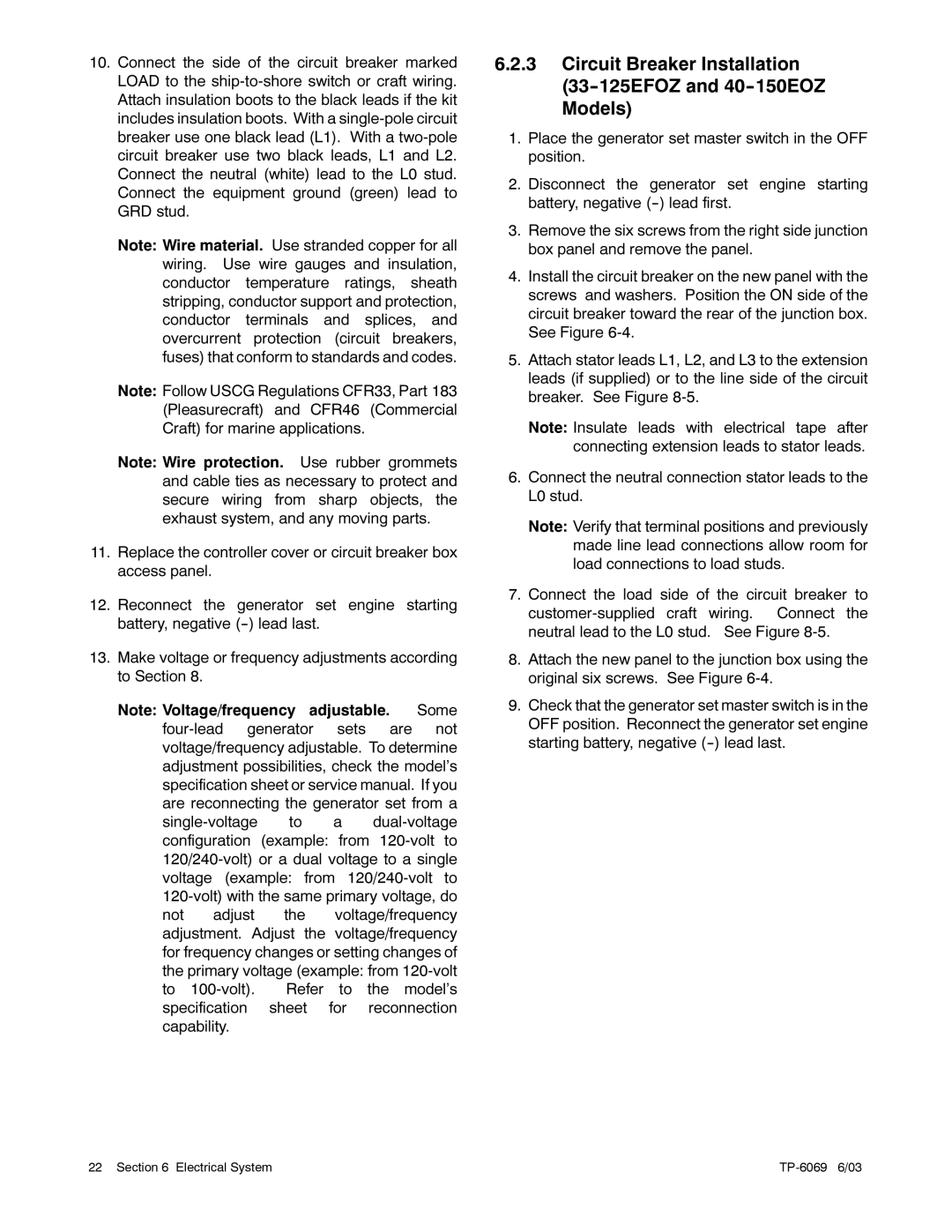10.Connect the side of the circuit breaker marked LOAD to the
Note: Wire material. Use stranded copper for all wiring. Use wire gauges and insulation, conductor temperature ratings, sheath stripping, conductor support and protection, conductor terminals and splices, and overcurrent protection (circuit breakers, fuses) that conform to standards and codes.
Note: Follow USCG Regulations CFR33, Part 183 (Pleasurecraft) and CFR46 (Commercial Craft) for marine applications.
Note: Wire protection. Use rubber grommets and cable ties as necessary to protect and secure wiring from sharp objects, the exhaust system, and any moving parts.
11.Replace the controller cover or circuit breaker box access panel.
12.Reconnect the generator set engine starting battery, negative
13.Make voltage or frequency adjustments according to Section 8.
Note: Voltage/frequency adjustable. Some
6.2.3Circuit Breaker Installation
1.Place the generator set master switch in the OFF position.
2.Disconnect the generator set engine starting battery, negative
3.Remove the six screws from the right side junction box panel and remove the panel.
4.Install the circuit breaker on the new panel with the screws and washers. Position the ON side of the circuit breaker toward the rear of the junction box. See Figure
5.Attach stator leads L1, L2, and L3 to the extension leads (if supplied) or to the line side of the circuit breaker. See Figure
Note: Insulate leads with electrical tape after connecting extension leads to stator leads.
6.Connect the neutral connection stator leads to the L0 stud.
Note: Verify that terminal positions and previously made line lead connections allow room for load connections to load studs.
7.Connect the load side of the circuit breaker to
8.Attach the new panel to the junction box using the original six screws. See Figure
9.Check that the generator set master switch is in the OFF position. Reconnect the generator set engine starting battery, negative
22 Section 6 Electrical System |
|
